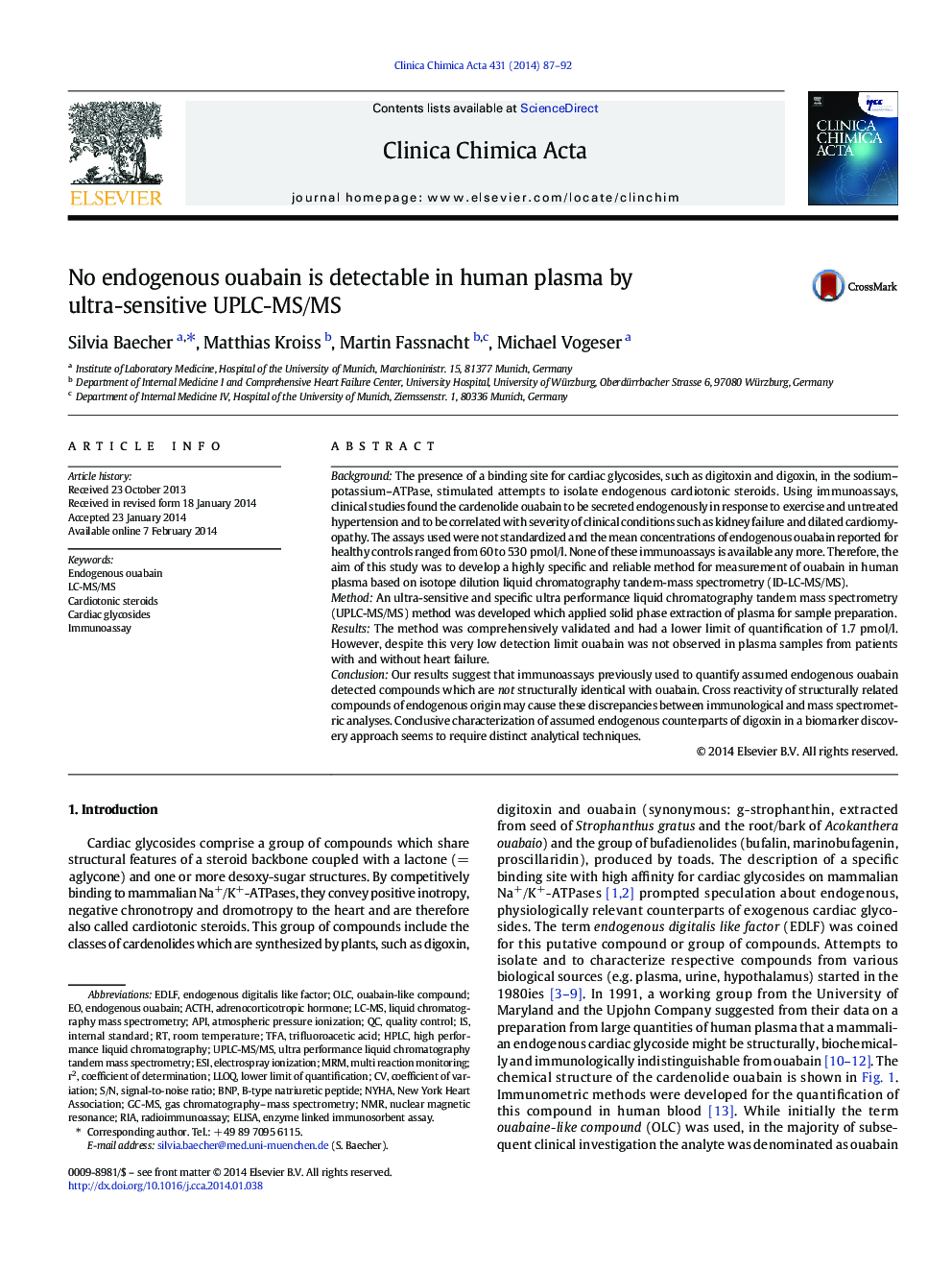| Article ID | Journal | Published Year | Pages | File Type |
|---|---|---|---|---|
| 1965458 | Clinica Chimica Acta | 2014 | 6 Pages |
•Extremely sensitive UPLC-MS/MS method for quantification of ouabain in human plasma.•In samples from patients with and without heart failure ouabain was not detected.•This is in striking contrast to all investigations based on immunoassay technology.•Ouabain immunoassays detect compounds which are not ouabain.
BackgroundThe presence of a binding site for cardiac glycosides, such as digitoxin and digoxin, in the sodium–potassium–ATPase, stimulated attempts to isolate endogenous cardiotonic steroids. Using immunoassays, clinical studies found the cardenolide ouabain to be secreted endogenously in response to exercise and untreated hypertension and to be correlated with severity of clinical conditions such as kidney failure and dilated cardiomyopathy. The assays used were not standardized and the mean concentrations of endogenous ouabain reported for healthy controls ranged from 60 to 530 pmol/l. None of these immunoassays is available any more. Therefore, the aim of this study was to develop a highly specific and reliable method for measurement of ouabain in human plasma based on isotope dilution liquid chromatography tandem-mass spectrometry (ID-LC-MS/MS).MethodAn ultra-sensitive and specific ultra performance liquid chromatography tandem mass spectrometry (UPLC-MS/MS) method was developed which applied solid phase extraction of plasma for sample preparation.ResultsThe method was comprehensively validated and had a lower limit of quantification of 1.7 pmol/l. However, despite this very low detection limit ouabain was not observed in plasma samples from patients with and without heart failure.ConclusionOur results suggest that immunoassays previously used to quantify assumed endogenous ouabain detected compounds which are not structurally identical with ouabain. Cross reactivity of structurally related compounds of endogenous origin may cause these discrepancies between immunological and mass spectrometric analyses. Conclusive characterization of assumed endogenous counterparts of digoxin in a biomarker discovery approach seems to require distinct analytical techniques.
